| |
Covid-19 vaccine tracker: the global race to vaccinate
|
| |
| |
https://ig.ft.com/coronavirus-vaccine-tracker/?areas=gbr&areas=isr&areas=usa&areas=eue&areas=can&areas=chn&areas=ind&cumulative=1&doses=total&populationAdjusted=1
At least 5.82bn doses of coronavirus vaccines have been administered around the world, data from 233 locations show.
After a year of breakneck research into more than 230 vaccine candidates, seven coronavirus vaccines are now in use in at least one country. Israel has been the fastest to roll out inoculations.
The numbers shown here are updated frequently, using data compiled by the Our World in Data project at the University of Oxford, the World Health Organization and national data sources from some countries.
Vaccine rollouts in advanced economies are largely outpacing those in emerging and developing economies - even in countries with similar death rates. Officials at the World Health Organization have warned that the world is on the brink of "catastrophic moral failure" as poor countries fall behind. Left unchecked, the virus could also mutate into strains that existing vaccines do not protect against.
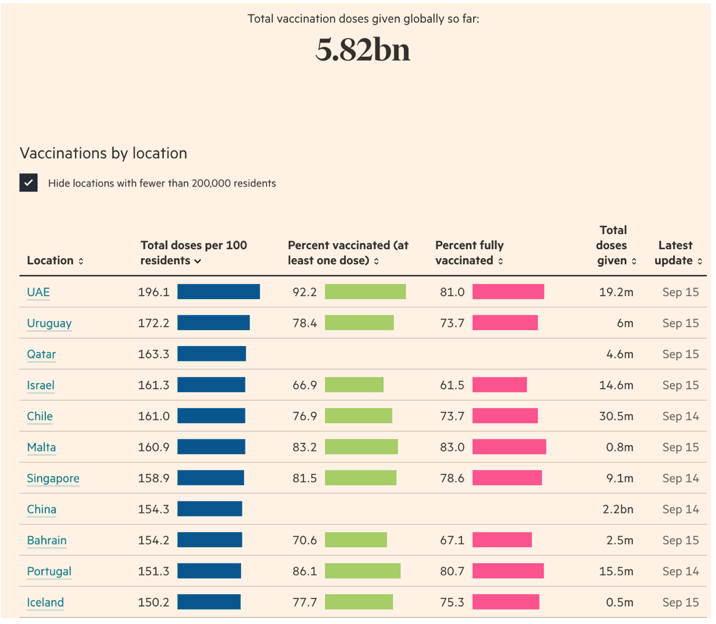
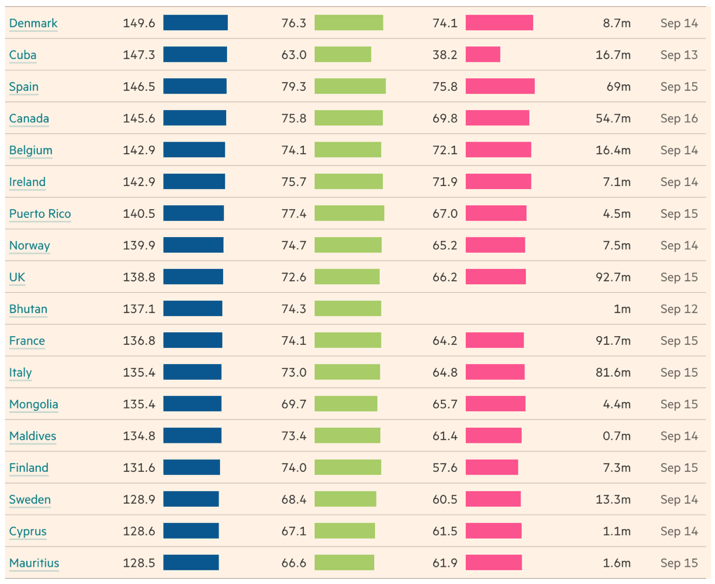

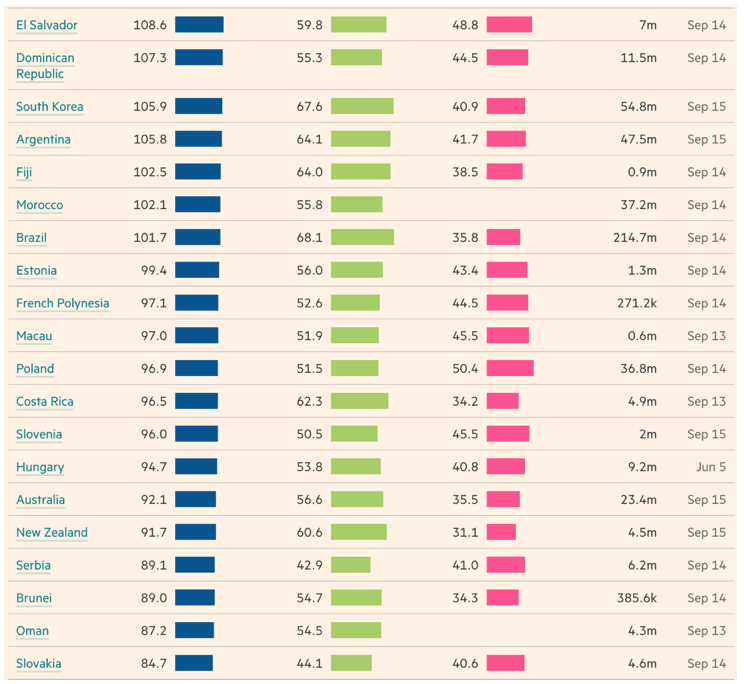
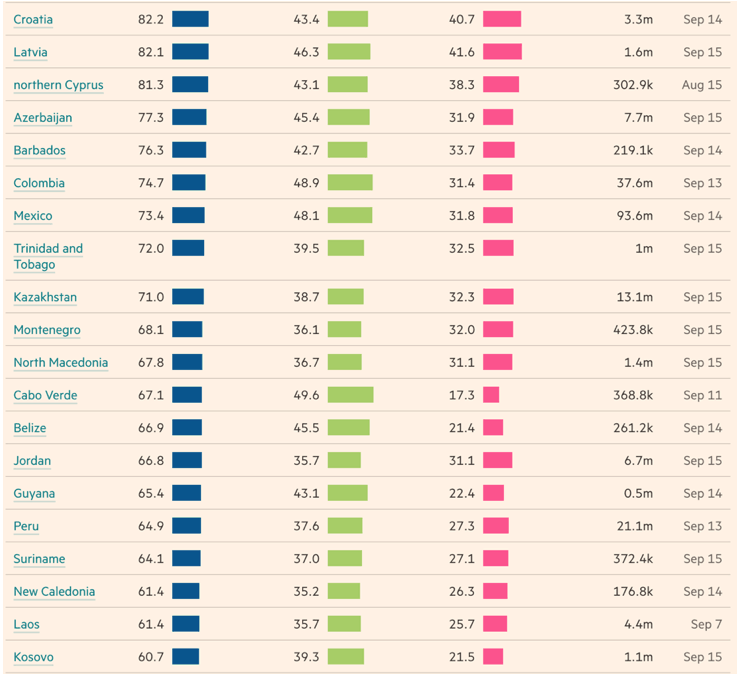
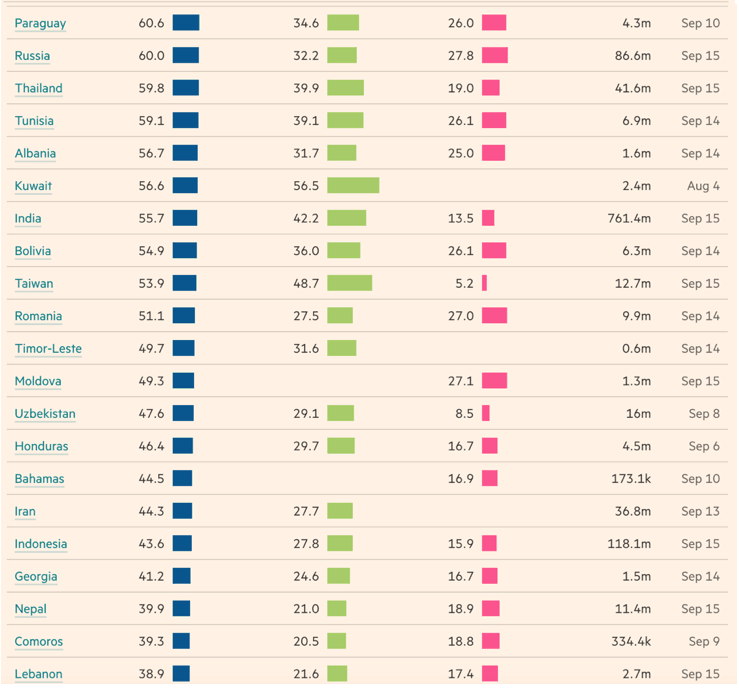
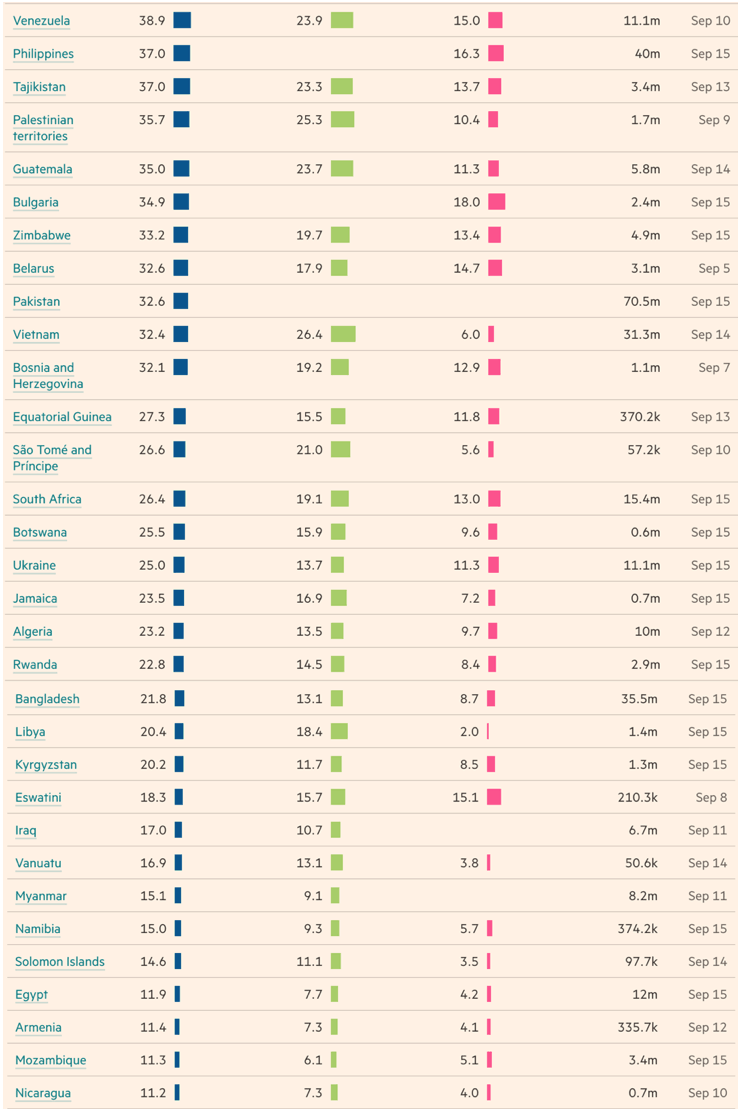

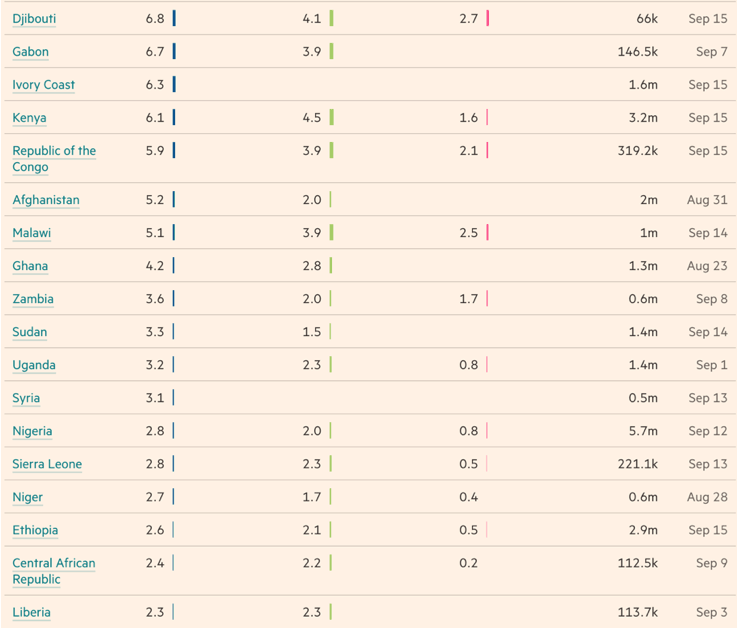
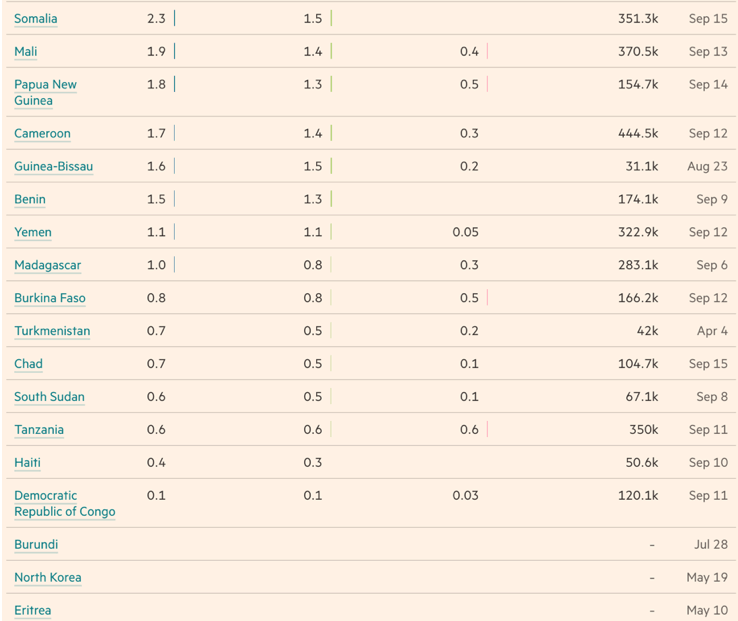


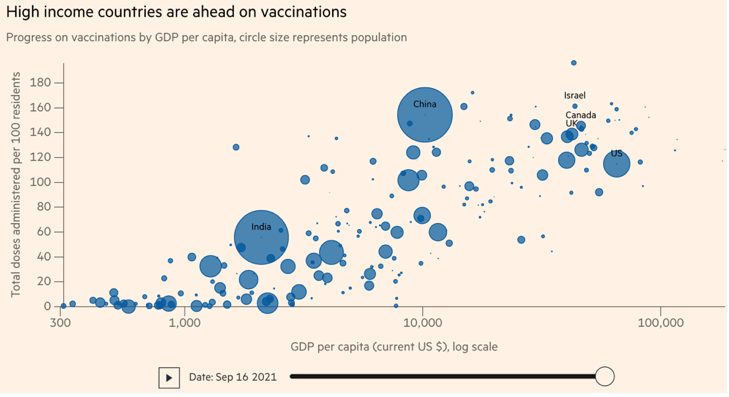
Sources
Unless specified below, the vaccination data shown here is compiled by Our World in Data from a variety of official and other sources such as local media. Each location's listing in the main table above links to the ultimate source of its data; a complete list of these sources is also available.
Where the latest available data are those reported to or compiled from local official sources by the World Health Organization, the link leads to the relevant WHO coronavirus dashboard.
The following locations' data is sourced seperately:
• Data for Austria, France, Germany, Jersey, Malaysia, Malta, Spain and the UK comes from their respective national health ministries, national health services or public health agencies.
• Data for the US as well as its territories or associated states - American Samoa, Guam, the Marshall Islands, Micronesia, the Northern Mariana Islands, Palau, Puerto Rico, and the US Virgin Islands - comes from the US Centers for Disease Control and Prevention.
• Data for Canada comes from public data sources compiled by COVID-19 Tracker Canada.
• Data for Ascension, Saba, and Sint Eustatius comes local official statements.
The data is adjusted to the total population of each location, including children who are not yet being vaccinated. Some locations may show cumulative figures greater than 100 per cent (or 200 total doses per 100 residents) due to under-estimated populations or policies allowing non-residents to receive vaccinations.
Unless otherwise stated, population figures used to adjust data come from the World Bank. Population data for Anguilla and Western Sahara come from the United Nations Population Division. Data for Eritrea comes from the WHO. Local sources are used for: Ascension, Bonaire, Sint Eustatius and Saba, Cyprus (and northern Cyprus), the Falkland Islands, Guernsey, Jersey, Moldova, St Helena, Taiwan, Tristan da Cunha the UK, the US and the Vatican City.
Unless otherwise stated, GDP per capita is 2019 data from the World Bank. Data from 2018 is used for American Samoa, the Cayman Islands, Cuba, the Faroe Islands, Greenland, Guam, the Isle of Man, Liechtenstein, Monaco, the Northern Mariana Islands, Sint Maarten. Older data is used for the US Virgin Islands (2017), French Polynesia and New Caledonia (2000). Data from the IMF World Economic Outlook 2019 is used for Iran, the Palestinian territories, San Marino, Somalia and Taiwan. The latest available data for Syria is from 2010. IMF estimates from 2019 are used for Aruba, Eritrea, the Marshall Islands, Micronesia, South Sudan, Turkmenistan and Venezuela.
Locations listed here include territories of other states and some entities whose sovereignty is disputed or not universally recognised. Such locations are listed separately if they are conducting their own vaccination programmes or if their populations are not included in the total populations of another state.
Countries are classified as "advanced economies" or "emerging market and developing economies" with the groupings from the International Monetary Fund's World Economic Outlook.
Help us improve these charts: We are always looking for any further sources of national, regional or municipal vaccination data that are not already shown in the table above. If you know of an official source of this data for your area, please email coronavirus-data@ft.com.
|
|
| |
| |
|
|
|